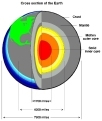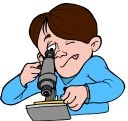
Worksheets and No Prep Teaching Resources
Reading Comprehension Worksheets
Earth
Erosion

Earth
 Worksheets and No Prep Teaching Resources Reading Comprehension Worksheets Earth Erosion |
 Earth |
| edHelper's suggested reading level: | high interest, readability grades 5 to 7 | |
| Flesch-Kincaid grade level: | 4.4 |
|
Earth Movers - Glaciers
By Patti Hutchison |

|
 1 Have you ever made a snowball with your hands? You pick up some snow and press it together in you hands. It quickly freezes into ice. If you have done this, you have made a "mini" glacier.
1 Have you ever made a snowball with your hands? You pick up some snow and press it together in you hands. It quickly freezes into ice. If you have done this, you have made a "mini" glacier. |
Create Weekly Reading Books
Prepare for an entire week at once! |
| Leave your feedback on Earth Movers - Glaciers (use this link if you found an error in the story) |
 |
Earth
|
 |
Erosion
|
 |
Special Education Science Materials for Teachers
|
 |
Science
|